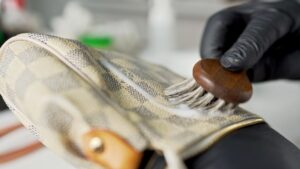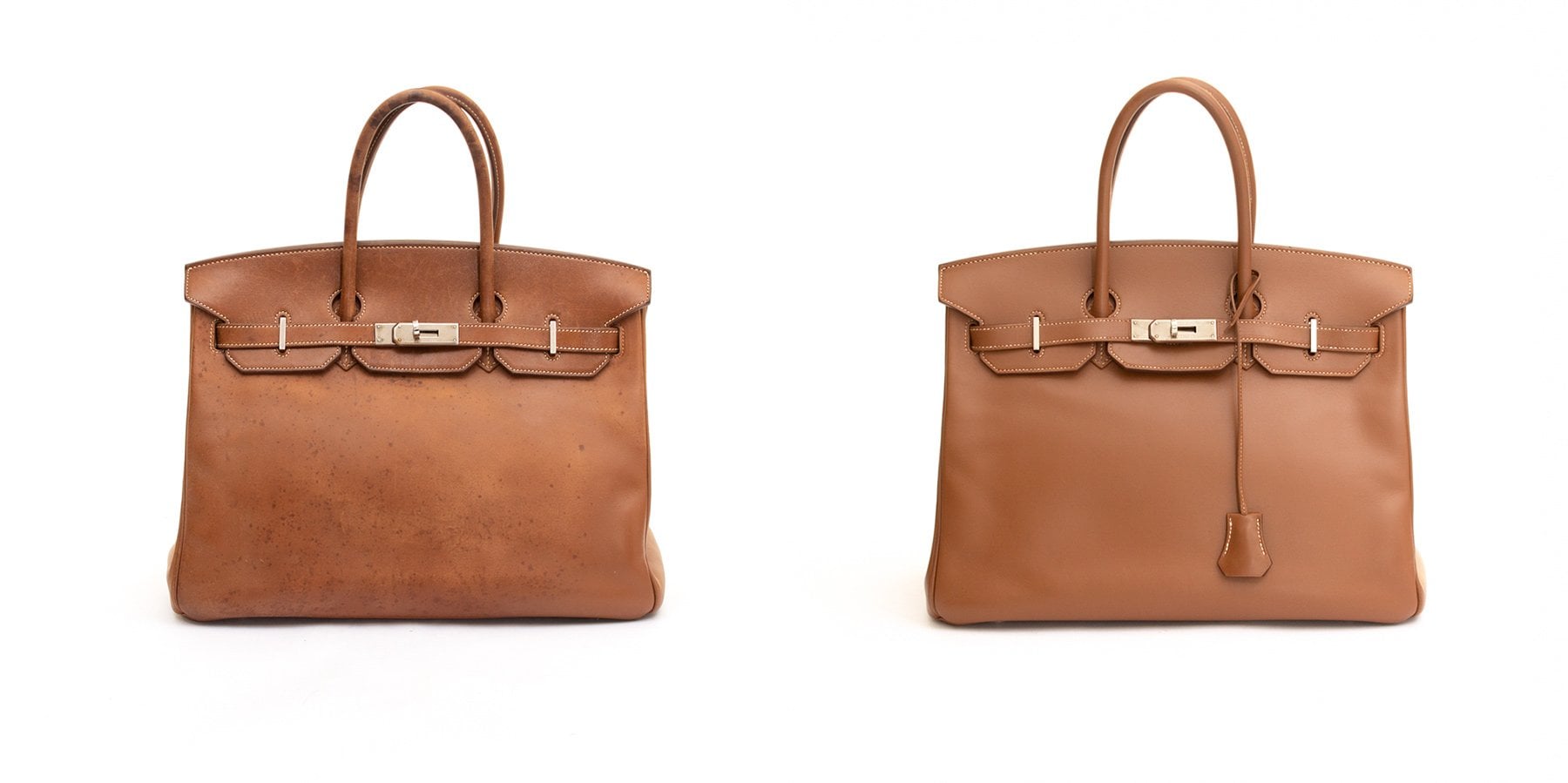Leather Restoration Techniques for Premium Handbags
The allure of premium leather handbags is undeniable. They are not just fashion statements but investments that traverse the journey of life with you. However, the passage of time can leave its mark, showing signs of wear or fading.
In a hurry? Book our professional handbag restoration service—same‑day pick‑up across UAE.
In this article, we explore the intricate world of leather restoration. We aim to equip you with the knowledge and techniques to revive the lost charm of your treasured handbags, ensuring they maintain their elegance just as on the day you first held them.
→ Hermes Berkin Before & After Handbag Color Restoration
Evaluating the Condition
Scratches
Scratches on leather handbags can range from superficial to deep, each requiring a different approach. It’s essential to assess the depth and severity of the scratches to determine the appropriate restoration method.
Scuffs
Scuffs, unlike scratches, often affect only the surface of the leather. They can mar the appearance but are generally easier to treat compared to deeper scratches.
Stains
Stains can be tricky. They vary in type – from ink to oil – and each type demands a specific treatment for effective removal without damaging the leather.
Fading
Fading occurs over time due to exposure to sunlight or the natural aging process of the leather. Identifying the extent of fading is crucial in choosing the right dye and restoration process.
Cleaning and Conditioning
The first step in any leather restoration process is a thorough cleaning. A mild leather cleaner helps remove surface dirt, grime, and stains, preparing the leather for further treatment. Following cleaning, a high-quality leather conditioner should be applied. This step is vital for restoring and maintaining the suppleness of the leather, preventing future cracking, and keeping the material resilient.

Repairing Scratches and Scuffs
Minor Scratches
For minor scratches, a simple application of leather conditioner or petroleum jelly can be effective. These products help blend the scratch into the surrounding leather, significantly reducing its visibility.
Deeper Scratches
Deeper scratches may require a leather repair kit. These kits typically include color-matched dyes and fillers. It’s important to follow the manufacturer’s instructions meticulously to ensure a smooth and color-consistent finish for leather handbag restoration.
Treating Stains
Water-Based Stains
Water-based stains, such as those from beverages, can often be treated with a damp cloth and mild soap. However, care must be taken to avoid saturating the leather.
Examples of Water-Based Stains
- Beverage spills
- Raindrops
- Food stains
Oil-Based Stains
Oil-based stains, such as grease or body oil, are more challenging. A common approach is using an absorbent like cornstarch or talcum powder to draw out the oil, followed by a gentle leather cleaner.
Examples of Oil-Based Stains
- Grease marks
- Body oils from hands and skin contact
Restoring Color and Fading
Restoring color and addressing fading involves selecting a high-quality leather dye that matches the bag’s original color. The process includes cleaning, evenly applying the dye, allowing it to dry, and then applying a leather sealer or conditioner. This not only restores the color but also protects the leather from future wear and fading, an important step for leather handbag resotration.
Addressing Structural Repairs
Structural repairs such as loose stitches, broken zippers, or worn-out handles often necessitate professional intervention. Leather repair specialists possess the expertise and tools needed for these complex repairs, ensuring the handbag’s structural integrity is meticulously restored.

Preserving and Maintaining
Regular maintenance, including cleaning and conditioning, is essential for preserving the beauty and extending the lifespan of leather handbags. Proper storage is equally important. Storing the handbag in a dust bag or pillow case protects it from dust, sunlight, and extreme environmental conditions.
Other Restoration Techniques
For specific issues like unstitched leather on chains or faded handles, detailed restoration techniques are required. Regular cleaning with warm, soapy water and a soft cloth, along with routine conditioning, helps maintain the handbag’s overall condition. Always wipe in alignment with the grain of the leather to prevent damage.
Conclusion
Restoring a premium leather handbag requires patience, attention to detail, and the right techniques. By following the steps outlined in this guide and committing to regular maintenance, you can ensure that your elegant companion remains by your side, in pristine condition, for many years to come.
Ready to restore your luxury leather handbags? Book a pickup or WhatsApp us for a free quote.

